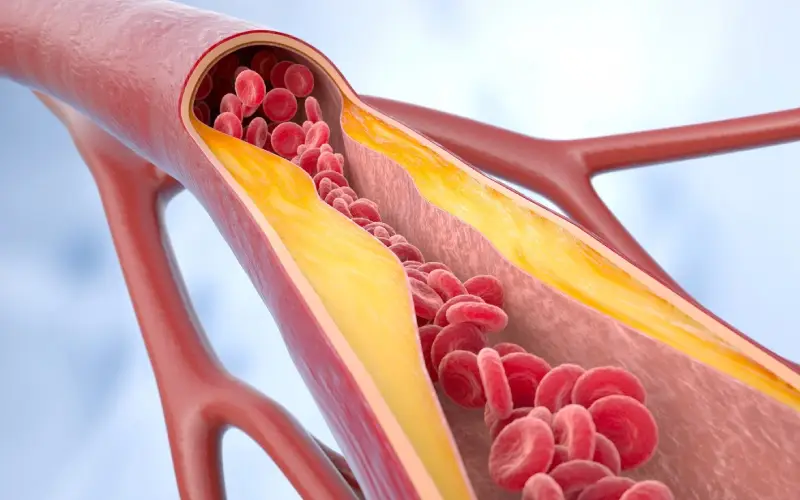Typical treatment for atherosclerosis has revolved around conventional therapies for cardiovascular disease such as lipid-lowering and hypertension drugs. But even when blood pressure and lipid levels decline, residual cardiovascular disease remains the biggest cause of death for people with established atherosclerosis. New research from Muredach Reilly, MD, a cardiologist and director of the Cardiometabolic Precision Medicine Program at NewYork-Presbyterian and Columbia, hints at a potential paradigm shift in the way doctors manage atherosclerosis.
The findings, recently published in Circulation, show an astonishing similarity between the behavior of tumor cells and the smooth muscle cells in atherosclerotic plaques, heralding the novel field of athero-oncology. This study is the first to use single-cell profiling and genetic lineage tracing technology to analyze the molecular behavior of these cells. Below, Dr. Reilly describes the study and how the findings may be used to advance the care of patients using cancer drugs.
Research Goals
In the 1950s, researchers hypothesized that smooth muscle cells behave in a clonal manner and look like tumor cells, proliferating and creating the lesion of an atherosclerotic plaque. It’s like a tumor in the blood vessel. It doesn’t metastasize, but it has features of inflammation, immune cell infiltration, and other abnormal cellular behaviors. A smooth muscle cell changes from being a contractile cell to more like a fibroblast or matrix cell in a tumor. This change from being contractile to reparative is called phenotype switching, and it is responsible for most restenosis in patients who have had stent placement.

Findings from a new study show an astonishing similarity between the behavior of tumor cells and the smooth muscle cells in atherosclerotic plaques.
In the last 20 years, we began to characterize these cells in atherosclerotic lesions at the molecular level and observed oxidative DNA damage and genomic instability. We also knew that even if someone lowered their LDL to 50, the lesions may not stabilize entirely, and a person could die of another cardiovascular problem. Yet few studies had examined the cancer-like properties of these cells and how the changes contributed to atherosclerosis. That’s why, in our study, we chose to track the development of transformed smooth muscle cells in mice with atherosclerosis and plaque samples from people with this disease.
Research Methods
We used smooth muscle cell lineage tracing in mice and human tissues and applied a range of methods — including molecular, cellular, histological, computational, human genetics, and pharmacological approaches — to investigate the features of smooth muscle cell-derived cells in atherosclerosis. We accelerated atherosclerosis in mice by introducing the KRAS genetic mutation, which is frequently mutated in cancer. And then we treated atherosclerotic mice with niraparib, a common cancer drug that targets cells with DNA damage.
Key Findings
My colleagues and I found that smooth muscle cell-derived cells in mouse and human atherosclerosis exhibited multiple tumor-like features, including genomic instability, evasion of senescence, hyperproliferation, resistance to cell death, invasiveness, and activation of comprehensive cancer-associated gene regulatory networks. DNA damage accumulated in mouse and human smooth muscle cells and accelerated atherosclerosis.
Introducing the KRAS mutation increased DNA damage in smooth muscle cells, with acceleration of phenotypic switching and exacerbation of atherosclerosis. There was no evidence of metastasis.
When we treated atherosclerotic mice with niraparib, we found that the drug significantly decreased the size of atherosclerotic plaques and improved plaque stability. This is important because stable plaques reduce the odds of a heart attack in a patient.
Future Implications
We were surprised by the degree of molecular similarities between smooth muscle cells and tumor cells. Our study shows that these transformed muscle cells drive atherosclerosis, opening the door to new treatment approaches. Our findings provide a proof of principle that if we manipulate these pathways with cancer drugs, there’s the potential for new therapies for people with established atherosclerotic disease. But more research needs to be done.
Certain anticancer drugs cause damage to the blood vessels. Others are more favorable to blood vessels and may block the progression of atherosclerosis. Knowing how each drug works as well as which mutations are present in a patient’s atherosclerotic plaques can help us define a precision medicine approach. We could match people with cancer with drugs that do not harm their blood vessels, and also use anticancer drugs in some people without cancer who have atherosclerosis.
Our findings also show that we don’t know everything about atherosclerosis. We thought we had this disease beaten with lipid and hypertension therapies. However, the research suggests that there are pathways and mechanisms that are not cholesterol- or blood pressure-related that are happening in the blood vessel wall. We may soon be rewriting the textbook about the mechanisms of this disease and opportunities for its treatment.




